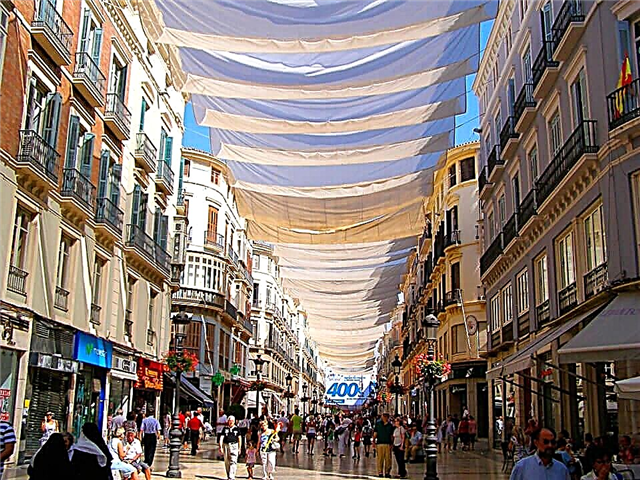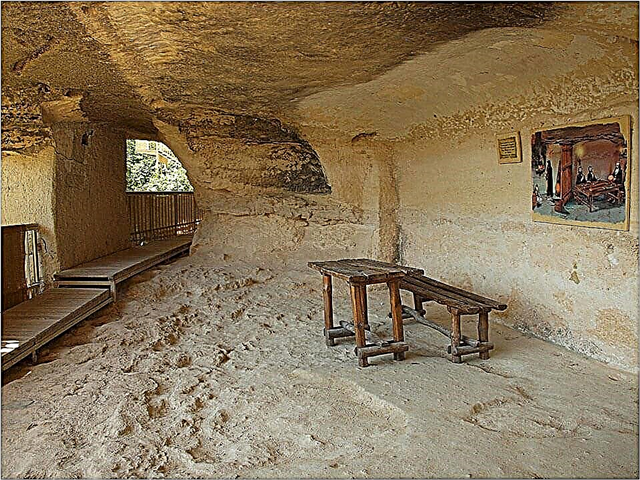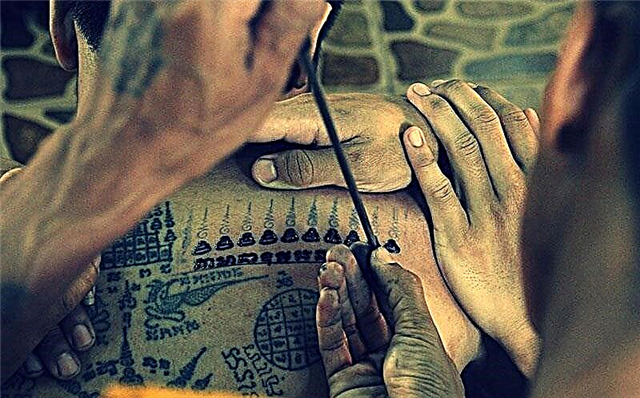The Tower of London is a visiting card of the city. It is located in its historical part and is the largest architectural and museum center of this type. Every year thousands of tourists visit it, eager to take a hundred or two photos and forever remember the unique atmosphere of this place.
History
The founding of the Tower of London is associated with the name of William the Conqueror, who, after the Battle of Hastings in 1066, began to actively strengthen his power. It was decided to establish a number of fortified points, one of which was to be located on the ruins of the old city walls, laid down by the Romans. So on the banks of the Thames appeared the first fragment of the White Tower, a stunning fortification, inferior in size only to the donjon of Headingham Castle.
Soon the tower began to function as a prison. An amazing story is connected with its first prisoner, Ranulf of Flambard. The first prisoner became the first fugitive: good friends handed the clergyman a bottle of wine with a rope in it. Ranulf's act was so impudent that he was immediately accused of conspiracy with evil spirits.
Expansion under King Richard I the Lionheart
It is not at all necessary to be a historian to know about this English king, who spent most of his life on the mainland in the Crusades, and then in captivity. It is not surprising that the expansion of the Tower was not on his direct initiative, but on the orders of William Longchamp, who served as Vice Chancellor.
The increase in the territory of the White Tower, and then the appearance of a moat along its perimeter, became extremely timely, since very soon the Tower had to survive its first siege, which, however, did not last long. The vice-chancellor considered it expedient to surrender the fortress three days after the start of the siege.
Expansion under Henry III
The 13th century passed very calmly for the Tower. Henry III turned out to be a capable king, and it was with him that the significant expansion of the castle's territory is associated. During his reign, nine towers were erected, which were then surrounded by stone walls. Each tower was not only an independent defensive point, but also served as a place of concentration of important craft and administrative premises.
Each of the towers performed its own function. For example, the Bell Tower housed a watch bell. The Lantron Tower was a beacon for ships sailing along the Thames (from Old English "lanthorn" - "lantern").
Expansion under King Edward I
Edward I completed the formation of the Tower's Outer Court. He actively applied in practice his knowledge of fortification, which more than once saved him during numerous military campaigns. It was under him that a new line of walls appeared, two bastions (at the northern part of the fortress walls) and another moat, whose width reached 50 meters.
New structures were added: the Lion Tower, in which, in fact, the lions were kept; The traitors' gates, through which the boats with the future prisoners of the castle passed; Mint and others. The construction was completed with two giant water mills, which made this place completely independent from the outside world.
Late Middle Ages
This period in the history of the Tower was marked by a number of high-profile imprisonments and bloody murders. So, for the first time, a woman was imprisoned in the cellars of the Tower, who not only did not want to accept Queen Isabella in her castle, but also ordered to kill part of her retinue. At different times, there were some noble prisoners from the mainland, but their detention here was not as comfortable as in other castles. Almost the entire 15th century passed under the banner of the war of the Scarlet and White Roses. Representatives of both dynastic lines have repeatedly besieged, captured and even partially destroyed the Tower.
This made the new owners of the castle think about the modernization necessary so that it could withstand artillery attacks. Another extremely sad event is associated with the late Middle Ages, more than once reflected in books and paintings. This is especially clearly read in the works of William Shakespeare and Thomas More. It is about the murder of Princes Richard and Edward, who were declared bastards and imprisoned in the castle. Power was usurped by their uncle Richard Gloucester. The princes did not come out from under the vaults of the old castle.
From castle to prison

By 1585, the Tudor dynasty was established on the throne, which soon moved its residence from the old fortress to Westminster. The Tower fell into disrepair and turned out to be hopelessly outdated in terms of fortifications. Its restoration and re-equipment would have required huge funds, and therefore it was simply practically ceased to be used, except for special ceremonial cases. However, the atmosphere of the torture and dungeon did not correspond to reality.
In fact, such associations only became stable thanks to the rather daring pamphlets of the 17th century and the writings of English novelists who tended to dramatize. Nevertheless, noble prisoners were still kept here, although not in shackles or under torture instruments. Executions rarely took place on the territory of the Tower itself, as a rule, they were public and carried out on the hill behind the palace.
Inside the thick walls, according to official statistics, only three people were executed: Catherine Howard and Anne Boleyn, the infamous husband of Henry VIII, and Jane Gray, who sat on the throne for only nine days. The murder of these women could have caused too wide a resonance in society. In the future, the monarchs from the Hanoverian dynasty tried to return the castle to its status, carried out work to clean up the moat, added new fortifications, but ultimately decided to build the Waterloo barracks. The Tower was last used as a prison during the Second World War. It contained high-ranking members of the Nazi party and some spies.
Recovery and tourism
Today this historic site is one of the main symbols of Great Britain. The interest of tourists in it is indisputable, but it did not appear recently, but back in the time of Elizabeth I, under whom a menagerie was opened here. A new stage in the tourist history of the Tower is associated with England in the 19th century, when William Ainsworth wrote his sensational novel.
At the same time, the glory of the main torture chamber in the country was entrenched behind the Tower, and the entrance here became paid and more orderly. Of particular interest were the premises of the Beauchamp Tower, on the walls of which the names and dates carved by the prisoners were preserved. By the 21st century, the tourist function of this place has finally taken shape.
Treasures and coronation regalia
Royal regalia in the Middle Ages was not only an important component of the coronation ceremony, but also gave kings some financial independence, since, if necessary, the monarchs could pledge them and receive the required amount of money.
Royal treasures have always been of particular value and were carefully guarded until the 17th century, when Oliver Cromwell usurped power and ordered everything to be melted down. As a result, only three swords and one spoon survived. The collection had to be re-created. The treasure is now kept in the west wing of Waterloo Barracks.
Exposition "Row of Kings"
The Row of Kings is the oldest permanent exhibition in world practice. The first version of the collection was presented to the public in 1688. The ten equestrian statues of kings were made in full height with stunning detail. The best masters of their time worked on them: carvers, painters, sculptors. The most famous of these is Greenling Gibbons.
The statues were created to raise the popularity of the Stuart kings.Since the exposition was a kind of marketing ploy, statues of “bad” kings, unpopular among the people, were not included in it. The modern exposition is located in the oldest part of the fortress - in the White Tower, being a real decoration of the Royal Armory.

This exposition is a companion exhibition, which is located in the same room with the "Kings' Row". It includes numerous armor from the Middle Ages, as well as the armor of some kings. Among them, the armor of Henry VIII stands out for different years of his life. They are distinguished by their skill and complexity of design. Heinrich Stewart's children's armor, as well as the traditional Japanese-style armor of Jacob I, donated to him by Japan, are also of particular interest.
Central Park Hotel
London
Located less than 100 meters from Hyde Park

Hotel Edward Paddington
London
Minutes from Paddington Station and Hyde Park

DoubleTree by Hilton London - Docklands Riverside
London
Located on the embankment of the Thames

Park Plaza County Hall London
London
Just minutes from the banks of the Thames and the London Eye

Weapon exposition
The collection of weapons is also part of the Row of Kings exhibition. Here are collected samples of swords, rapiers, sabers, bows and even firearms. Each exhibit represents its own era.
Royal Menagerie
The Royal Animals exhibition is part of the exhibitions that tell about the historical past of this place. It is housed in the Brick Tower and is dedicated to the menagerie, which has been a special passion of the English monarchs since the 13th century. Some of the native animals were so popular that life-size sculptures are now part of the collection.
Among these exhibits is a polar bear, once donated to the crown by the Norwegian king. For the sake of his maintenance, each official paid 4 pence to the treasury every day, and the bear himself was periodically released to swim in the Thames. At different times, the menagerie was replenished with three lions (a gift from Frederick III), an elephant from Louis XI and other no less exotic animals. By the 18th century, anyone could visit the royal menagerie by purchasing a ticket or giving a cat or dog instead of a fee to feed predators.
Castle crows
There are currently eight ravens living in the Tower. These large, important birds are the property of England. According to the legends, when the crows leave the fortress, the kingdom will fall. In practice, this prediction has not yet been tested, but the birds still clipped their wings. They are looked after by a beefeater. The caretaker goes to the market every morning and personally chooses the meat for the birds. It is forbidden to touch or feed crows.
Yeomen (beefeaters)
Initially, the Yeomen were created as a guard, which was supposed to protect the monarch during his stay in the fortress. But gradually they became guardians of royal regalia and overseers. Today, beefeaters act as guides. As with the Stewarts, the Guard consists of 37 men. Their shape has changed little. Most tourists instantly recognize the traditional blue and red suits, which are replaced with purple and gold plated suits when the Queen visits the Tower.
Coca-Cola London Eye Ticket - £ 24.30
Tower of London and Royal Treasure Exhibition Ticket - £ 26.80
Tower Bridge Ticket - £ 9.80
Westminster Abbey entrance ticket and audio guide - £ 20
Madame Tussauds ticket - £ 29
St Paul's Cathedral Fast Track Ticket - £ 16
Skyscraper "Shard" - entrance ticket and champagne - £ 24.95
Key ceremony

Traditionalism has always been considered a trademark of the British, which is quite clearly seen in the example of the key ceremony, which has been performed daily at 21:30 for the past 700 years. In itself, this action is not very impressive: the chief beefeater simply hands over the keys to the Tower to the head of another unit that guards the fortress at night.
Chapel of Saint Peter in Shackles
This building was erected in the XII century, but was unable to maintain its authentic appearance. Four centuries later, it underwent a large-scale reconstruction. The chapel went down in history as a funeral service and burial place for numerous prisoners of the castle. Here - directly opposite the chapel - demonstrative executions were carried out.
Among the most famous personalities buried on its territory, there are three privately executed queens, as well as two fighters for the rights of the Catholic Church: John Fisher and Thomas More. The magnificent organ of the 17th century still amazes with its purity of sound. It is also worth noting that Greenling Gibbons worked on the decoration of the chapel at one time, who created some sculptures that are part of the "Row of Kings".
Fusiliers Museum
On the defense of the fortress, there were always not only beefeaters, but also fusiliers, a special kind of British troops, the main weapon unit of which was fusei - flintlock guns. The first Fusiliers regiment was formed in the 17th century. Over the years, he managed to take part in all the significant military conflicts that England has ever entered. The operating museum contains orders, medals, samples of uniforms and honorary military trophies.
Medieval palace premises

The Tower was once a royal residence. Echoes of this time, fortunately, are perfectly preserved in stone. We are talking about such buildings as the Royal Palace, which was built mainly in the 13th century, the living quarters of the monarch in the White Tower, as well as the Queen's House. The latter could not be saved, but fragments of the rooms and their furnishings were recreated in other rooms of the fortress.
Guests will be able to get acquainted a little closer with the life of the English monarchs, see the real throne, fireplace, meeting room, throne room and other premises. There is also a collection of rare objects that complemented the life of a medieval man, for example, a unique lead figurine of a knight, which was once a toy of a little aristocrat.
Opening hours and ticket prices
During the summer period (from March 1 to October 31), the Tower can be visited from 9:00 to 17:30 from Tuesday to Saturday, on Mondays and Sundays, the territory opens to the public an hour later. In winter (from November 1 to February 28), the working day is somewhat shorter. From Tuesday to Saturday, visits are possible from 9:00 to 16:30, on Mondays and Sundays from 10:00 to 17:00.
The entrance ticket price varies depending on the age of the tourist and the way of purchasing the ticket. A full ticket purchased at the entrance will cost 25.0 GBP, a child ticket - 12.0 GBP. Buying your ticket online will save you up to 2 GBP. It should also be borne in mind that the ticket price includes a charitable contribution equal to 10% of its total cost, but this contribution is voluntary. If you wish, you can also use the audio guide. This option costs 4 GBP.
Where is it located and how to get there
You can get to the Tower in different ways. The simplest is the metro. The nearest station is called Tower Hill. Next, you need to carefully look at the signs. The entrance will be through the Tower Moat. You can also use public transport. Bus lines RV1, 100, 78, 42 and 15 are ideal. Riverboat enthusiasts can reach Tower Pier by waterbus that leaves every twenty minutes from Greenwich, Charing Cross and Westminster.











